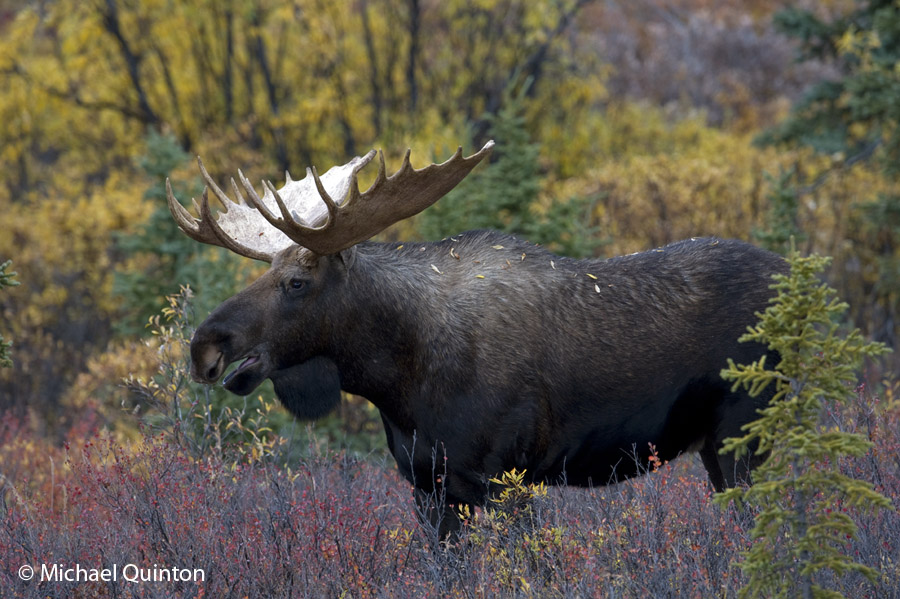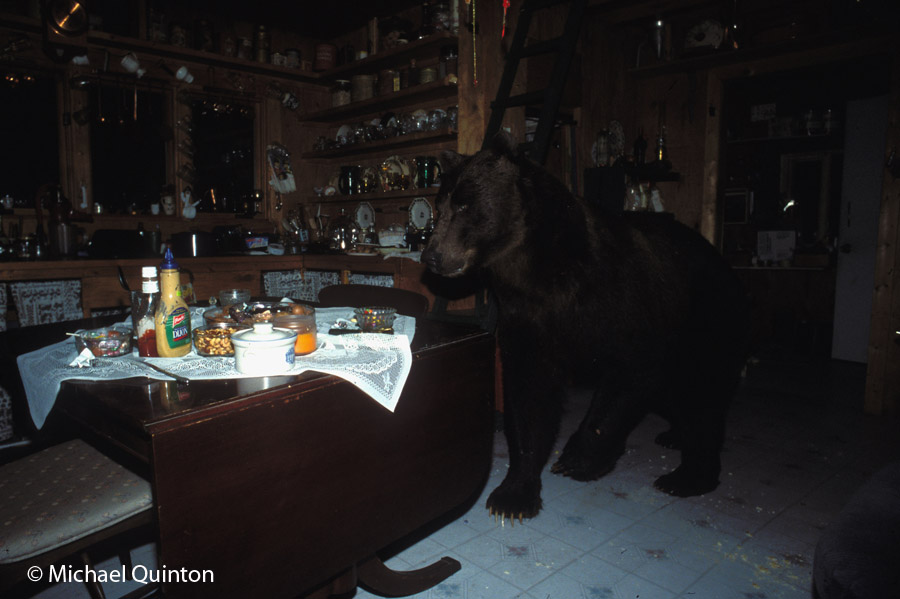 Adult male is a night hunter and his prey consisting of small birds and mammals, such as this red-backed vole, are located by sight and sound.
Adult male is a night hunter and his prey consisting of small birds and mammals, such as this red-backed vole, are located by sight and sound.
Since nesting began, the male has been impossible to locate in the dark, damp forest near Slana, Alaska. But each evening he arrives at the nest site to deliver prey to the owlets. As the Alaskan days grow shorter, the male becomes active as twilight engulfs the stand of tall white spruce and poplar. He is the sole provider for the five owlets snuggled inside a hollow stub. The female abandoned her owlets when they were three weeks of age. They no longer needed brooding so apparently her role is complete. Continue reading →
 Alaskan bull moose grunts as it travels in search of cows. Continue reading
Alaskan bull moose grunts as it travels in search of cows. Continue reading 












